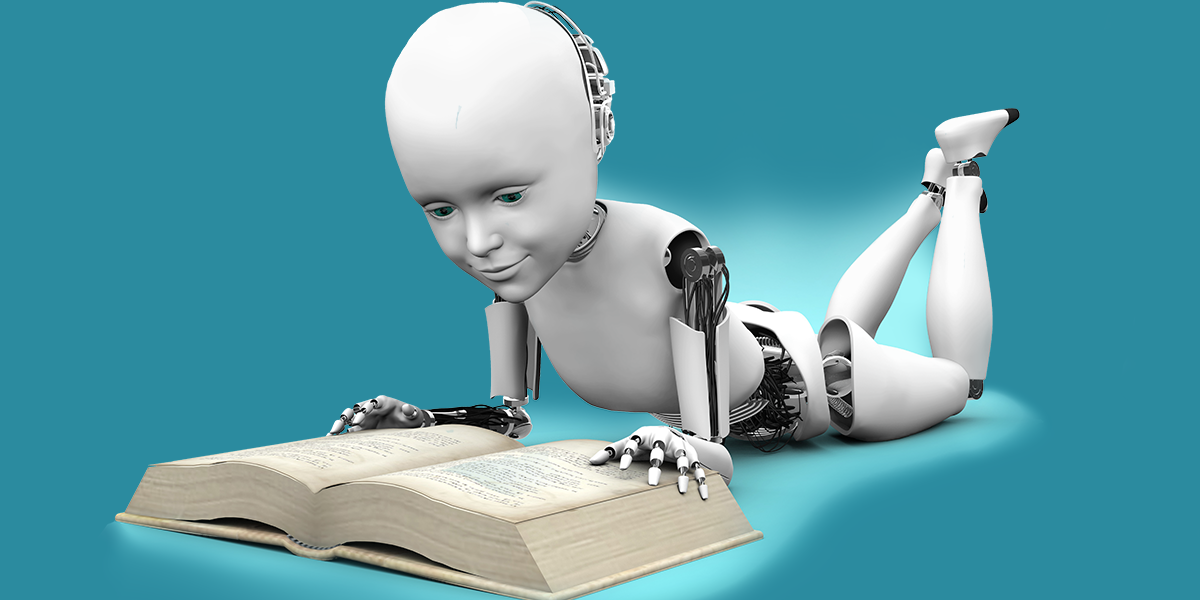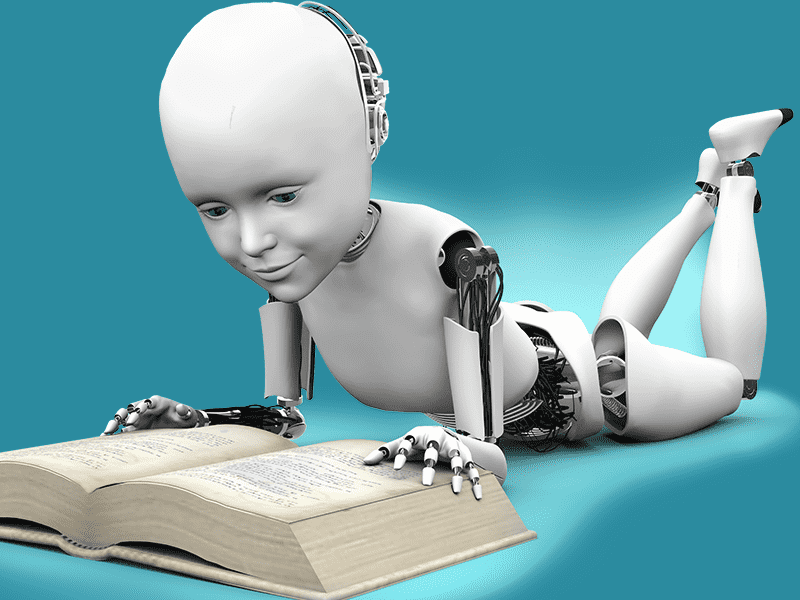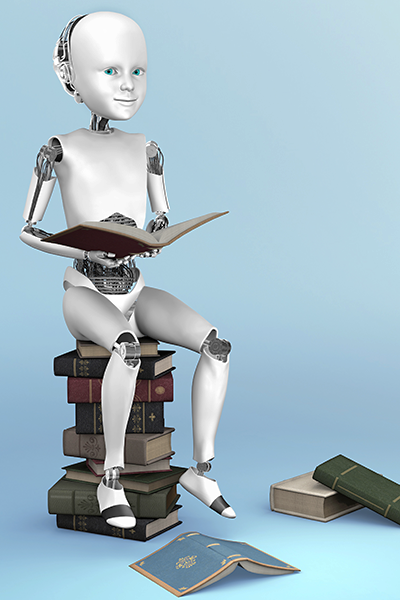
Dream Machines (Or Nightmare?)

Dream Machines (Or Nightmare?)
Originally Posted 9/01/2018 |
From the Fall/Winter 2018 Issue
Elon Musk, the tech leader who wants us to take vacations to the moon, has called artificial intelligence “the biggest risk we face as a civilization.” And he’s not alone in his worries. Just think of Hollywood’s representations of the Terminator, HAL, or Haley Joel Osment in that one Steven Spielberg movie. Our human fears of technology are nothing new, but with the birth of AI it has definitely hit 11 on a 10-point scale. But do we really need to start stockpiling our postapocalypse supplies? UTSA computer science professor in practice Amanda Fernandez has a pretty good idea. In her first year at UTSA, Fernandez rebooted the Introduction to Artificial Intelligence course. She’s also presented at the Grace Hopper Celebration of Women in Computing conference and has received the Provost Teaching Innovation Grant Award for designing hands-on activities for her AI students to introduce concepts needed in modeling machine intelligence, while also incorporating the latest AI technologies.
We have years of theoretical research coming to life right now and are on the cusp of building something real.
With AI the buzzword of 2018, Fernandez answered some of Sombrilla Magazine’s questions about her field and addresses fears that humans will one day be subject to computer overlords.
You research machine learning but what specifically? Machine learning is a subfield of AI—being able to create machines and algorithms that can see what human eyes can see, like robots that are more adept at helping individuals through their daily lives. Home care is a good example, helping someone maneuver in their home. Even in terms of prosthetics for individuals who have lost vision, some of the constructs apply to retinal prosthetics and help somebody to see better.
With my particular research, the most direct impact will be on areas relying on machine learning with a combination of a camera. Looking at creating better cameras that can identify objects better and make sure they are in focus, for example. Let’s say you set up a tripod, you put your camera up there, and everyone runs to get a group photo. When the camera looks at the group, it is trying to determine depth of field, make sure people’s faces aren’t blurry. Any improvements on those algorithms are my specialty.

What got you interested in machine learning? I was always interested in physics and math, and then I discovered computer science. In grad school I moved toward machine learning and AI because of algorithms and subfields that deal with forensics and how you can create something that fools some of these algorithms. For example, if I have an algorithm that recognizes cat images—and that’s what it does and it’s very good at it—how many pixels do I have to change in a picture of a duck for the algorithm to think it’s a cat but it still looks like a duck. You can see how this can be applied to forensics. How many pixels do you have to change on a check to make it look like $1 million instead of $10.
Did you get to trick a lot of algorithms? Yes. I was doing both, trying to trick the algorithm and trying to create algorithms that can’t be tricked. The other thing that’s kind of interesting is if you see pictures in the media, sometimes those are altered and it’s easy to see if an image is Photoshopped. But some are modified in another way, and we can’t see it as humans. So some machine-learning algorithms that might be tricked, they can look for common issues and identify forgeries.
So basically you’re helping computers see. Sort of like when the Terminator determines who John Connor is and then makes the decision to eliminate him? Just part of it. Most of my research is going to help the Terminator know the difference between John Connor and the bush next to him, or John Connor and another person next to him. The elimination part is not really part of my job.
If you want to do a whole bunch of AI things at UTSA, we are building it. It’s going to be great.
OK, but you don’t think we’ll end up with robot overlords? [Laughs]No. We are pretty far behind. We are at the point where we have the equivalent of artificial intelligence in pieces, in separate labs everywhere. It’s not like we’re building the ultimate machine and putting all the pieces together. Self-driving cars will be a great AI revolution but they won’t be our overlords. It’s just an interface. Honestly, we have years of theoretical research coming to life right now and are on the cusp of building something real. But maybe six different somethings.
Then I’ll put away my fear for now. [Nods with a smile] You can feel safe in doing that.
Where do you see AI fitting in at UTSA and having the biggest impact? Now that I’m offering this course, for me the biggest impact is making sure I’m training these students well. I have students who will be artificial-intelligence ready for the workforce. Overall, I’m excited for AI here. If you want to do a whole bunch of AI things at UTSA, we are building it. It’s going to be great. In the computer science department, we have a data science concentration. They already offer the machine-learning class, and we now offer Intro to AI, which covers all the different areas. Computer engineering offers robotics, and the College of Business looks at cybersecurity and the business end of AI. It’s not just our department; it’s across disciplines.

